1.5MW沙漠地区风电机组塔架设计毕业论文
2020-07-16 20:14:22
摘 要
目前,风能作为一种新兴的可再生能源已广泛被各发达国家、发展中国家利用。我国近几年来风力发电机总装机量已达领先位置,风力发电占总产电量比例越来越高。塔架作为风力发电机组的主要支承部件,塔架设计对风力发电机的安全性与经济性具有重要影响。因此风电机组的塔架设计尤为重要。
本次设计从安全可靠的角度,针对给定的某沙漠地区的风场资源,进行1.5MW的塔架设计。首先进行塔架的结构设计,选择钢筒式塔架;再确定塔架高度,分为上中下三段方便安装运输,确定塔架的直径、壁厚、各段筒节参数等;接着进行塔架的基础设计;然后可进行塔架钢板下料的计算。并需对塔架进行强度、稳定性、壁厚校核等,确保塔架的安全。再按照规范设计法兰,并对法兰连接螺栓进行强度校核。然后用传统以及有限元方法对塔架进行动力学问题分析探讨。最后,对设计的塔架进行成本核算。
关键词:风力发电机 塔筒 法兰 高强螺栓
Design of 1.5MW Wind Turbine Tower in Desert Area
Abstract
At present, wind power, as a new renewable energy source, has been widely used by developed countries and developing countries. In recent years, the total installed capacity of wind turbines in China has reached the leading position, and wind power generation accounts for a higher proportion of total electricity production. The tower is the main supporting component of the wind turbine and the design of the tower has a crucial influence on the safety and economy of the wind turbine. Therefore, the tower design of wind turbines is particularly important.
In this design, from a safe and reliable point of view, a 1.5MW tower design will be carried out for a given wind resource in a desert area. First, the tower structure design, select the steel tower; and then determine the height of the tower, divided into upper and middle three sections to facilitate the installation and transportation, determine the tower diameter, wall thickness, section of the section and other parameters; then proceed The basic design of the tower; the calculation of the tower steel sheet can then be performed. The strength, stability and wall thickness of the tower should be checked to ensure the safety of the tower. Then design the flange according to the specification and check the strength of the flange bolts. Then the traditional and finite element methods are used to analyze the dynamics of the tower. Finally, the designed tower is cost-accounted.
Key words: Wind turbine; Tower tube; Flange; High-strength bolt
目录
第一章 绪论 1
1.1风力发电发展现状与趋势 1
1.1.1全球风电发展现状与趋势 1
1.1.2国内风电发展现状与趋势 2
1.2塔架设计概述 3
1.3本章小结 3
第二章 1.5MW塔架总体参数设计 4
2.1确定风资源条件 4
2.2塔架总体参数设计 4
2.2.1额定功率、设计寿命 4
2.2.2切出风速、切入风速、额定风速 4
2.2.3风轮直径 4
2.2.4叶片数 5
2.3本章小结 5
第三章 塔架及其基础设计 6
3.1 塔架高度 6
3.2 塔架分段 6
3.3 塔架的基本结构形式 9
3.4 塔架的结构尺寸、重量和材料 9
3.5塔架基础设计 9
3.5.1基本设计要求 9
3.5.2基础的形式设计 10
3.5.3基础的设计计算 11
3.6塔架钢板下料尺寸计算 14
3.7本章小结 17
第四章 塔架设计校核 18
4.1塔架强度校核 18
4.1.1塔架的受力分析 18
4.1.2塔架风压力 20
4.1.3塔架气动推力 21
4.1.4强度校核计算过程 21
4.2塔架壁厚校核计算 23
4.2.1塔架顶端截面壁厚校核 24
4.2.2塔架中部截面壁厚校核 24
4.2.3塔架底部截面壁厚校核 25
4.3塔架稳定性校核 26
4.3.1塔架稳定性分析 26
4.3.2塔架稳定性计算 27
4.4本章小结 27
第五章 塔架法兰螺栓的设计 29
5.1塔架法兰螺栓的选择 29
5.2法兰连接螺栓的最大工作载荷计算 29
5.3塔架法兰螺栓的强度校核计算 31
5.4本章小结 33
第六章 塔架附件 34
6.1塔架法兰焊接 34
6.1.1塔架的焊接要求 34
6.1.2塔筒法兰焊接工艺 34
6.1.3改善焊接残余变形的措施 35
6.2塔架防腐 35
6.3本章小结 36
第七章 塔架动力特性探讨 37
7.1传统方法进行塔架模态分析 37
7.2有限元进行塔架模态分析 38
7.2.1有限元简介 38
7.2.2有限元对塔架进行模态分析 39
7.3本章小结 40
第八章 塔架经济成本核算 41
参考文献 42
致谢 44
绪论
1.1风力发电发展现状与趋势
1.1.1全球风电发展现状与趋势
当前世界经济发展迅速,在迅速的经济发展下,能源的消耗也就尤其多。经济发展以及人类的生存都不能缺少能源。然而,煤炭、石油、天然气等化石能源为不可再生能源,总量十分有限,且化石能源的燃烧使用会污染环境,不符合可持续发展的要求,所以就需要大力发展新能源[1]。新能源即指风能、太阳能、生物质能等可再生能源,满足可持续发展的要求,且对环境无污染。在这些可再生能源中,风力发电由于建设周期短、总量多、转化效率高等优点,广泛受到各国的重视[2]。
近些年随着风力发电的高速发展,世界主要发达国家以及发展中国家,都已将风力发电当做重点开发的新型能源进行利用,涉及风力发电的国家越来越多[3]。至2016年,风电已成为美国的第一大可再生能源,并且在此之前的几年,美国风电成本下降了近66%;德国已彻底实现风电市场化;在丹麦,目前风电已满足全国40%的用电需求。截止2016年全球风电市场累计装机容量达486.7GW,自2005年来复合增速达到了21.13%,如图1-1所示。2001年-2016年新增装机容量如图1-2所示;并且全球风能协会对风电市场空间做了如图1-3所示预测。
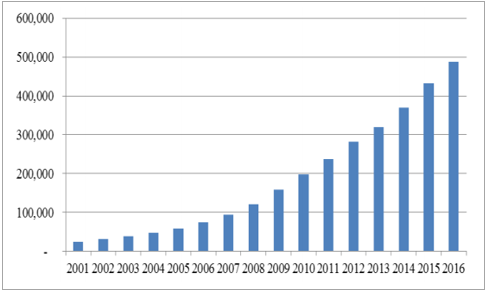
相关图片展示:
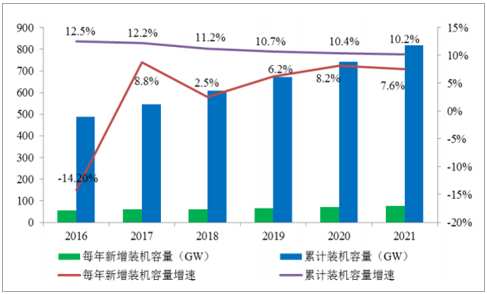
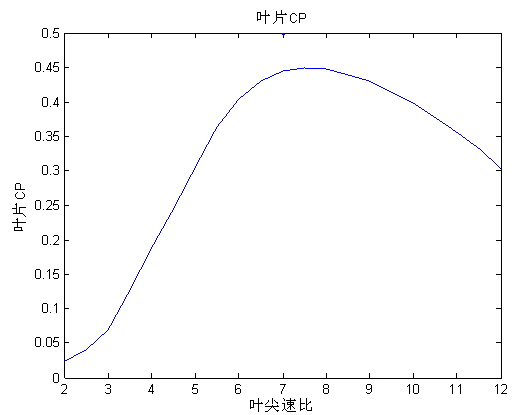
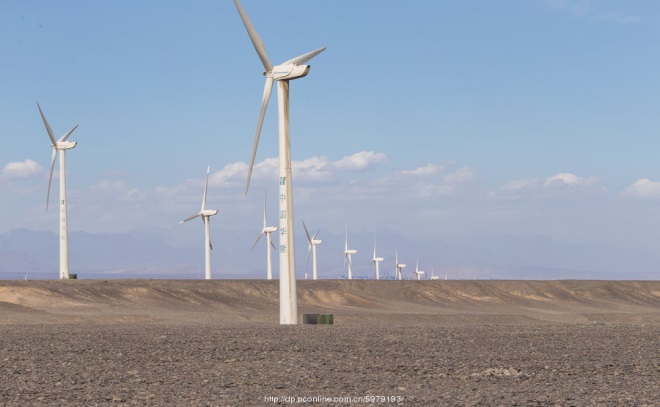
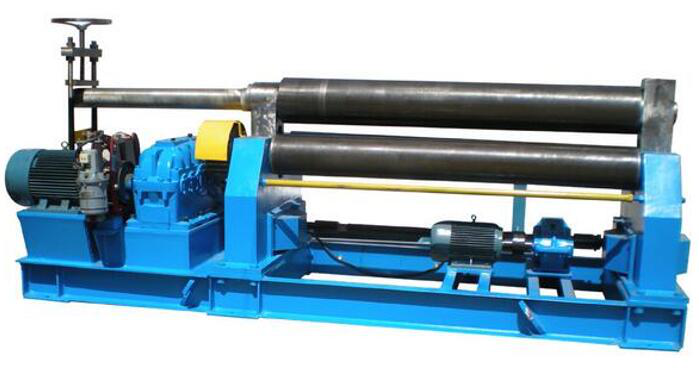
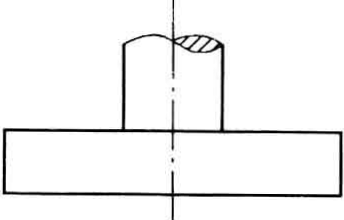
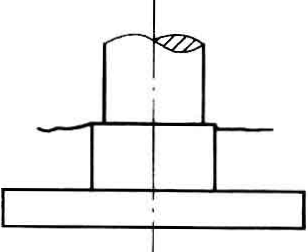
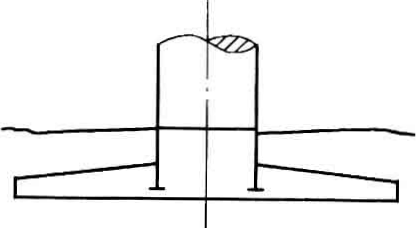
课题毕业论文、开题报告、任务书、外文翻译、程序设计、图纸设计等资料可联系客服协助查找。



